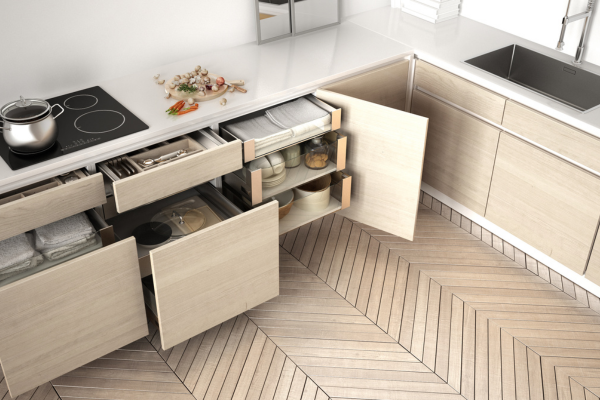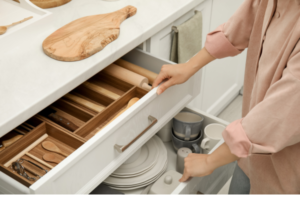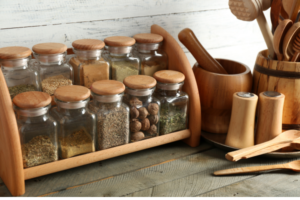Introduction:
A kitchen is more than just a place to cook; it’s the heart of the home where culinary creativity comes to life. And in the symphony of flavors and aromas, the organization plays a vital role. Utensils are the backbone of any culinary expedition, and how they are stored and arranged can significantly impact the cooking experience. The art of utensil organization not only elevates the aesthetics of a kitchen but also enhances functionality and efficiency. In this article, we delve into the importance of meticulous utensil organization and the various strategies to achieve an impeccable kitchen setup.
Importance of Utensil Organization
The chaos of a disorganized kitchen can impede the joy of cooking. Searching through cluttered drawers or cabinets for the right tool disrupts the flow and rhythm of meal preparation. Efficient utensil organization not only saves time but also reduces stress in the kitchen. It enables easy access to the necessary tools, streamlining the cooking process and allowing for a more enjoyable culinary experience.
Moreover, a well-organized kitchen contributes to safety. Sharp knives or other hazardous utensils scattered around haphazardly pose risks, especially in a bustling kitchen. Properly storing these tools in designated places ensures a safer environment, particularly for households with children.
Strategies for Utensil Organization
1. Categorization and Segregation
Begin by categorizing utensils based on their use. Grouping similar items together—such as spatulas, ladles, whisks, and tongs—simplifies the organization process. Segregate these categories into sections within drawers or cabinets, making it easier to locate specific utensils when needed.
2. Utilize Drawer Dividers and Inserts
Drawer dividers and inserts are valuable assets in maintaining order within kitchen drawers. These dividers create compartments for different utensils, preventing them from becoming a jumbled mess. Opt for adjustable dividers to accommodate various utensil sizes and shapes efficiently.
3. Hanging Solutions
Utilize wall space by installing hooks, racks, or magnetic strips to hang utensils. This method not only saves drawer or counter space but also provides easy access to frequently used tools. Hanging solutions can add a decorative element to the kitchen while serving a functional purpose.
4. Labeling and Clear Containers
Consider labeling containers or using transparent jars for smaller utensils such as measuring spoons, forks, or pastry brushes. Clear containers allow for quick identification of contents, streamlining the selection process during cooking or baking sessions.
5. Assess and Revise Regularly
Regularly assess the organization system in place and make necessary adjustments. As cooking habits evolve or new utensils are added, revising the organization strategy ensures that the kitchen remains well-ordered and tailored to specific needs.
Importance of Organization in Professional Culinary Settings
In professional culinary environments, whether it’s a bustling restaurant kitchen or a high-end hotel, the significance of utensil organization cannot be overstated. Efficiency and speed are crucial factors in meeting customer demands without compromising on quality.
Streamlining Workflows
A well-organized kitchen is akin to a symphony orchestra – every utensil has its role, and its placement can significantly impact the overall performance. Chefs in professional settings meticulously plan the layout of their kitchen, strategically placing utensils within arm’s reach to minimize movement and optimize workflow. This level of organization enables chefs to focus on the artistry of cooking rather than wasting time searching for tools.
Time Management and Service Efficiency
In a busy restaurant, where orders pour in continuously, time is of the essence. Organized utensils contribute to efficient time management during peak hours. With everything in its designated place, chefs can swiftly access the necessary utensils, ensuring timely preparation and service. This precision is paramount in meeting customer expectations for prompt and high-quality meals.
Sanitation and Safety Compliance
In professional kitchens, sanitation and safety standards are non-negotiable. Organized utensils play a vital role in maintaining cleanliness and adherence to safety protocols. Properly stored tools minimize the risk of cross-contamination, and clear organization facilitates regular cleaning and inspection of utensils, ensuring they meet hygiene standards.
Adaptability and Collaboration
Professional kitchens often involve teamwork, requiring seamless collaboration among kitchen staff. An organized system allows multiple chefs or kitchen assistants to navigate the kitchen efficiently. Consistent organization fosters a collaborative environment, where everyone understands the layout and can work harmoniously, promoting synergy and enhancing productivity.
Innovation in Professional Utensil Organization
In the realm of professional kitchens, innovative solutions for utensil organization continue to evolve. From advanced storage systems that optimize space utilization to technology-integrated kitchen designs that streamline cooking processes, the industry is constantly seeking inventive ways to enhance efficiency and functionality.
Conclusion
The art of utensil organization extends beyond domestic kitchens; it is the backbone of efficiency and success in professional culinary settings. The meticulous arrangement of utensils not only streamlines workflows but also contributes to time management, sanitation, and collaboration among kitchen staff. In the fast-paced environment of restaurants and hotels, where precision and speed are imperative, a well-organized kitchen ensures seamless operations and upholds the highest standards of quality and service.



